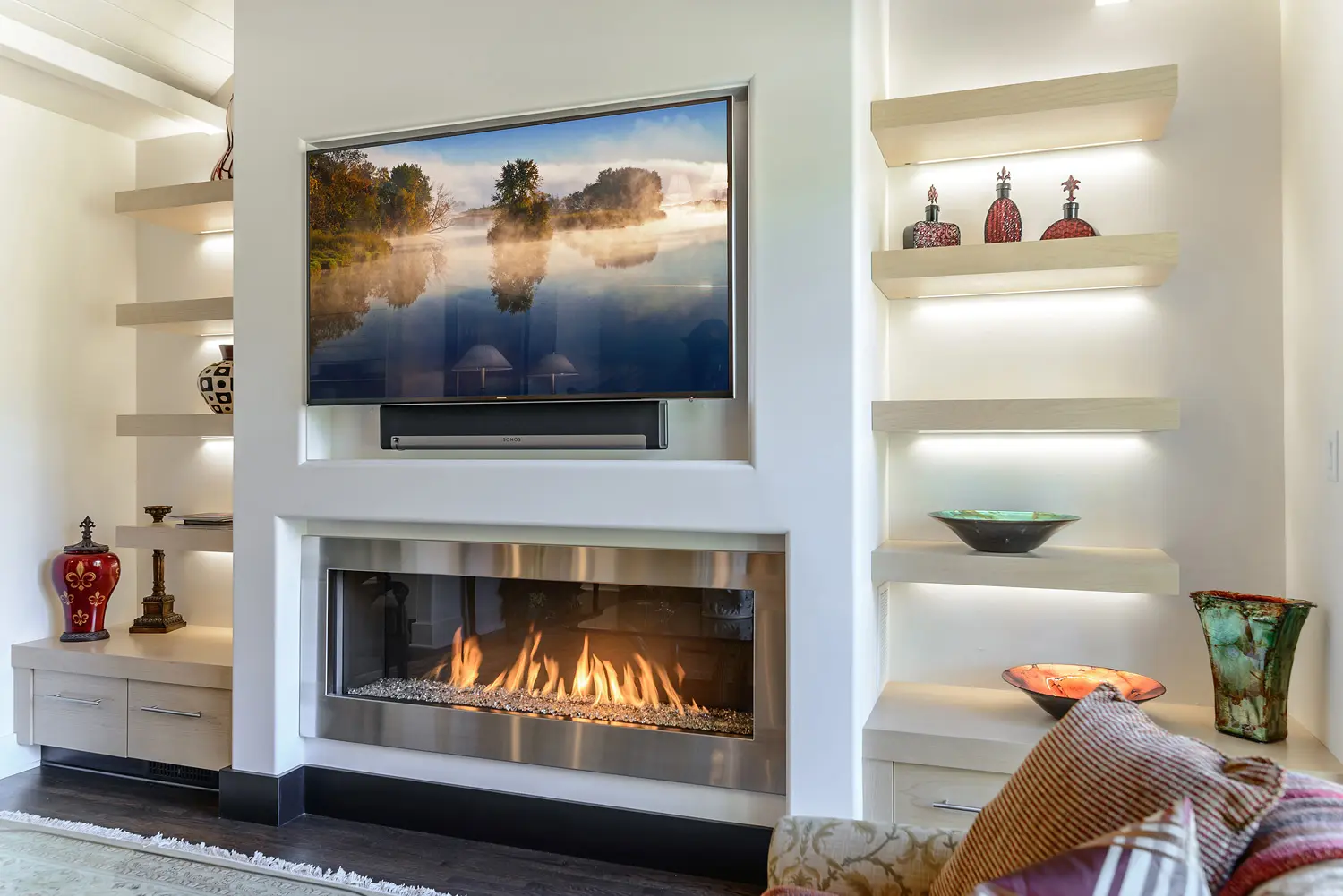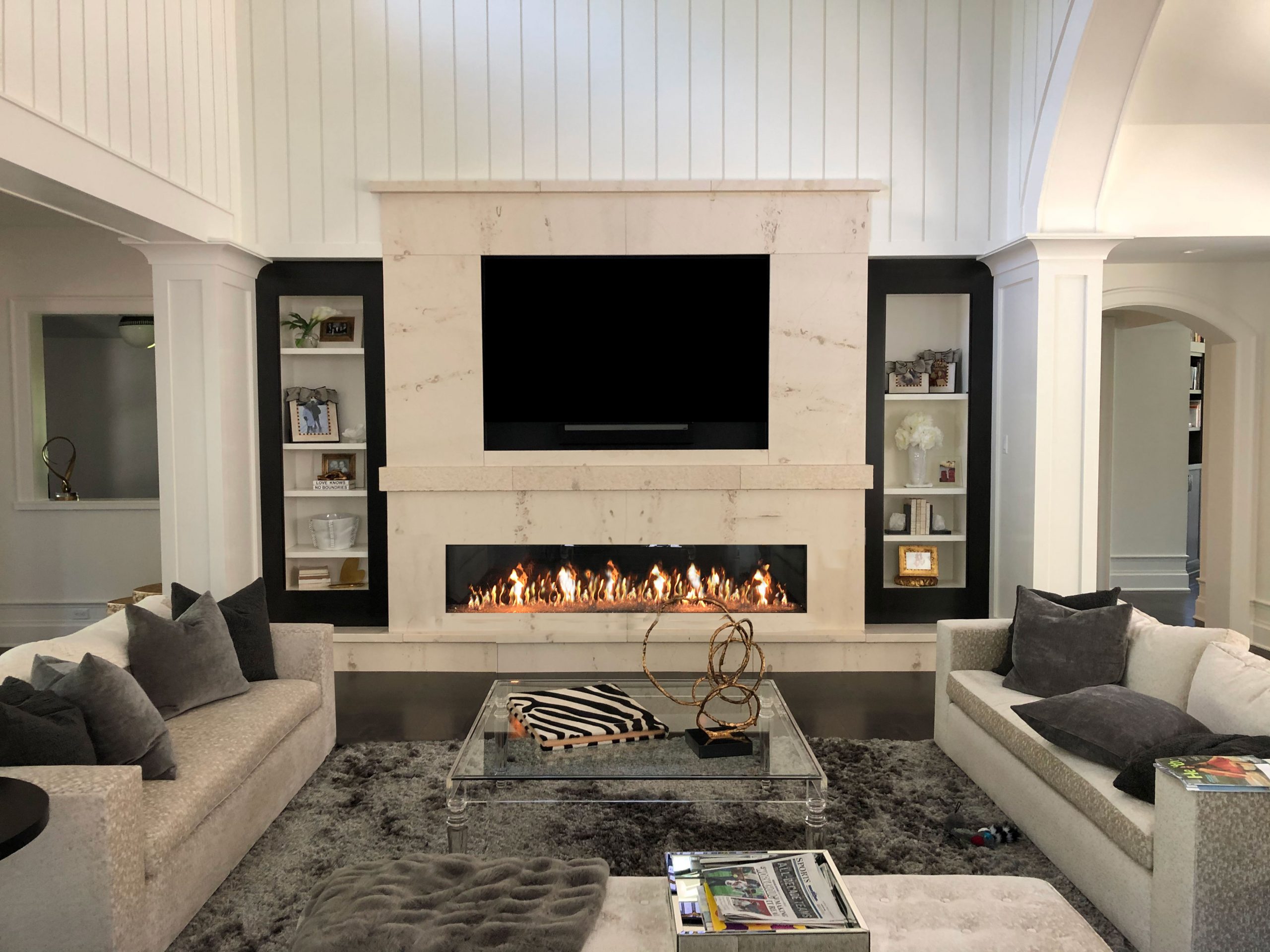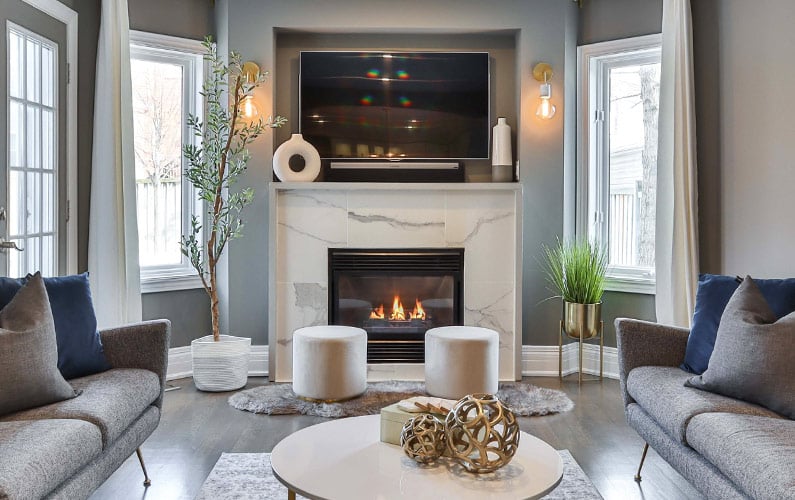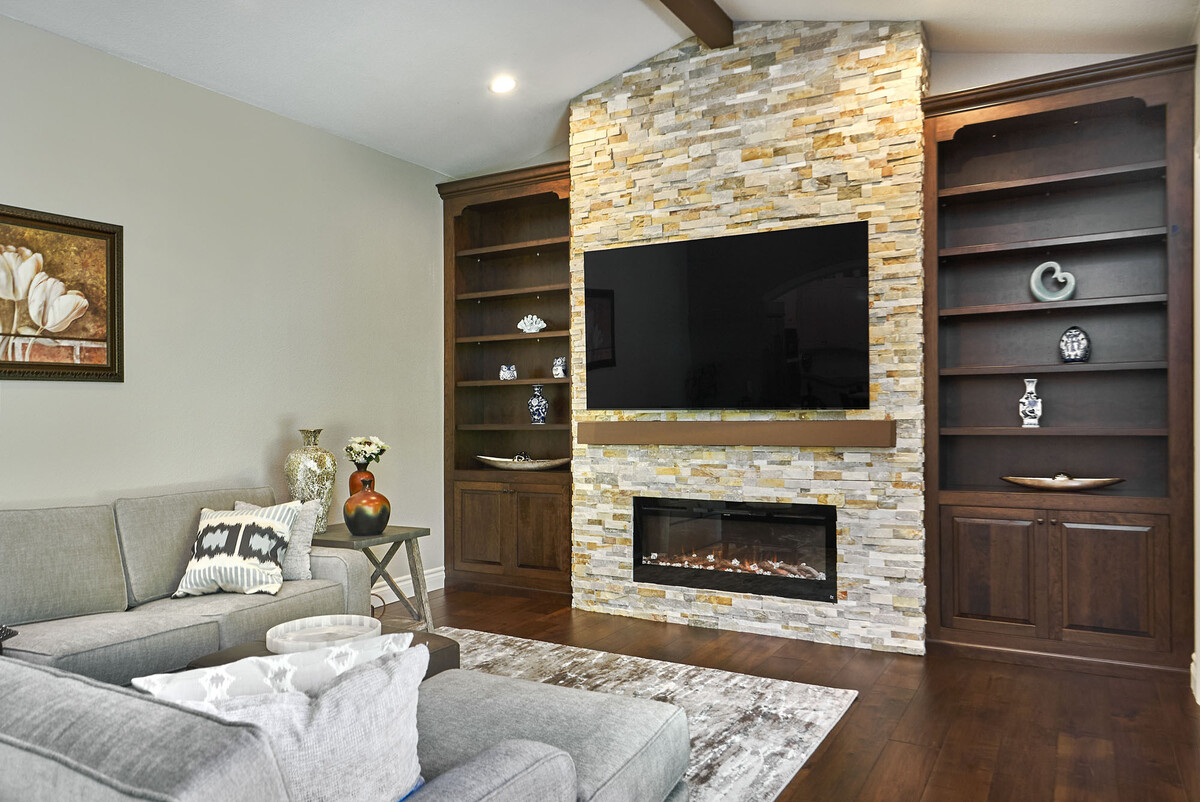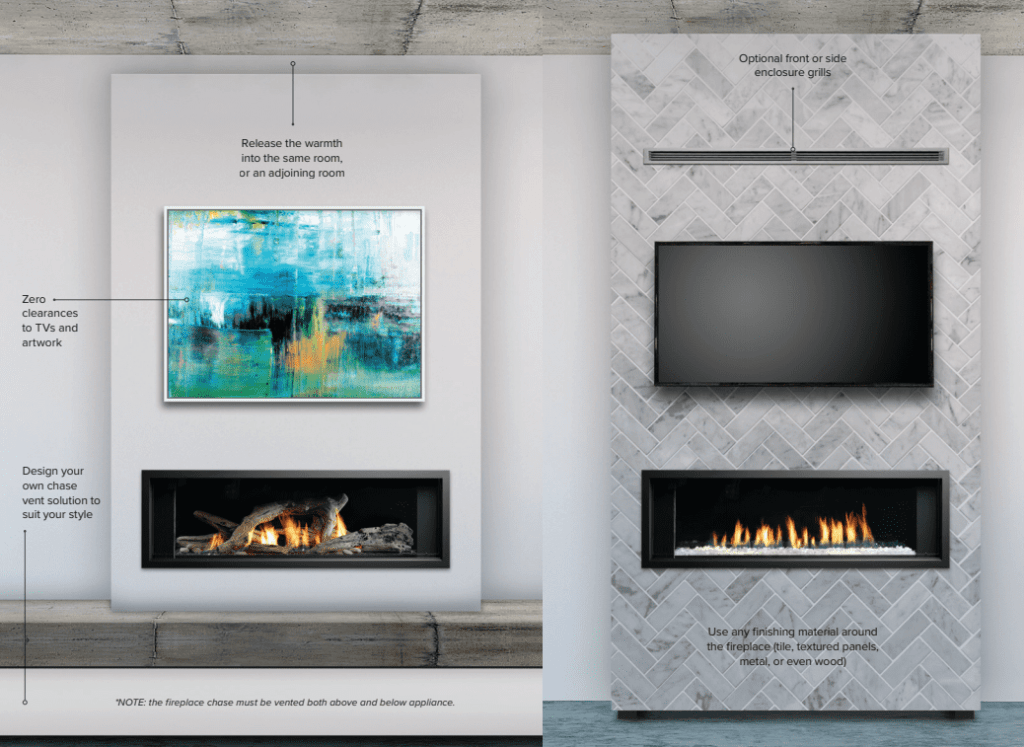Can You Mount A Tv On A Fireplace
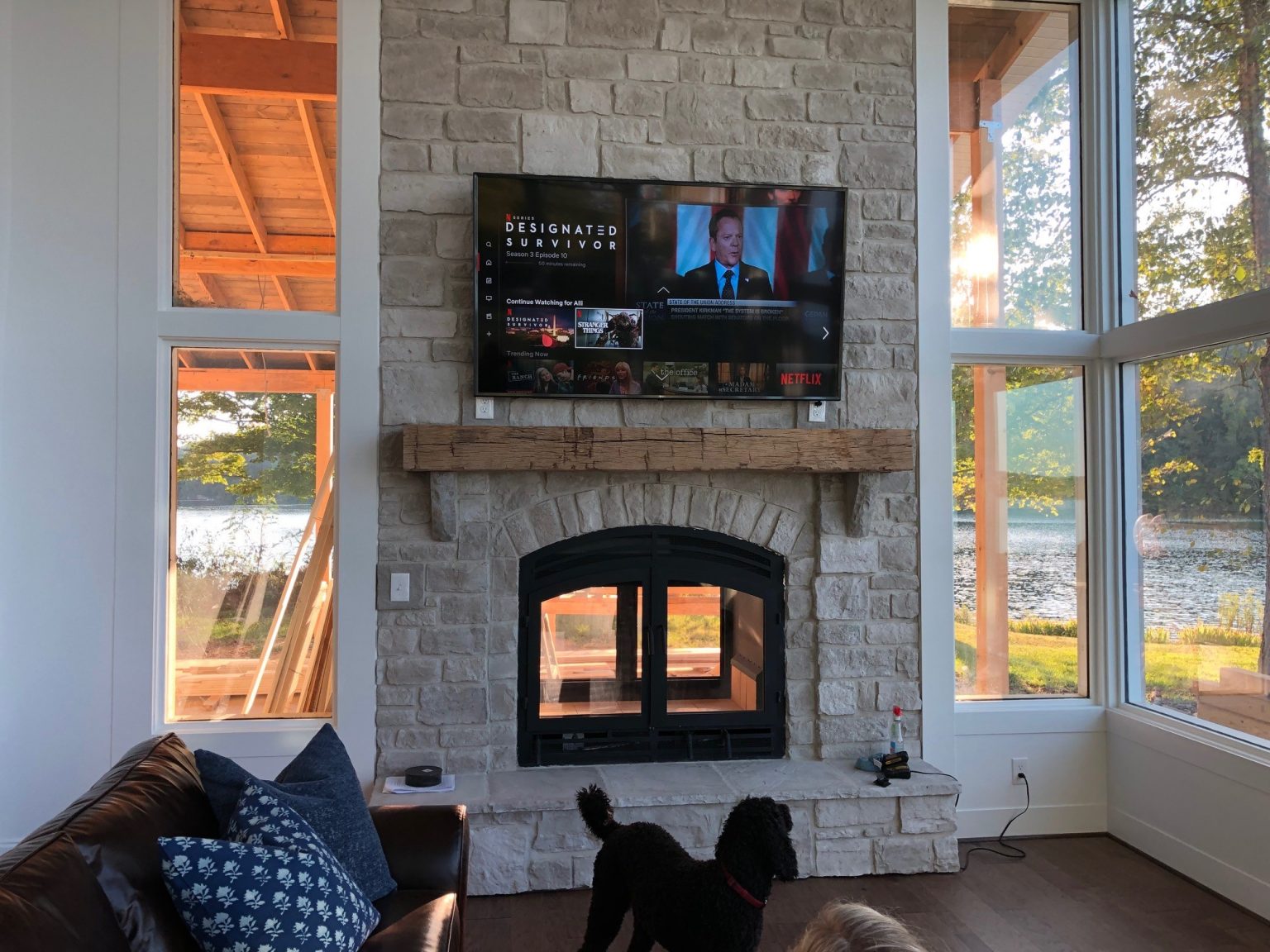
One of the most common questions we encounter during home consultations, especially when discussing heating upgrades, is whether it's a good idea to mount a TV above a fireplace. The allure is understandable – a cozy fire crackling below a large screen sounds idyllic. However, the reality can be complex, involving heat damage, viewing angles, and even potential safety hazards. Let's delve into the pros, cons, and crucial considerations before you commit.
The Appeal of a Fireplace TV Setup
The primary advantage of mounting a TV above a fireplace is space saving. In smaller living rooms, it can consolidate the entertainment area into a single focal point, freeing up valuable floor space. Aesthetically, it can also create a clean, modern look, minimizing clutter and wires. Many homeowners envision a cozy ambiance, enjoying their favorite shows while a fire warms the room. But this vision often clashes with the technical and practical realities.
The Heat Factor: A Major Concern
The most significant disadvantage is heat. Fireplaces, whether gas, electric, or wood-burning, generate substantial heat. This heat rises and can severely damage the sensitive electronics inside a television. LCD screens are particularly vulnerable, with excessive heat potentially causing discoloration, pixel damage, and even complete failure. The higher the BTU output of your fireplace, the greater the risk. For those upgrading to high-efficiency fireplaces with increased BTU ratings, this concern is amplified.
How Hot is Too Hot?
Most TV manufacturers recommend operating temperatures between 32°F (0°C) and 104°F (40°C). Temperatures significantly exceeding this range can void warranties and lead to irreparable damage. Gas fireplaces, especially, can produce surface temperatures well above 104°F within a few feet of the opening. Wood-burning fireplaces often radiate even more intense heat. Electric fireplaces tend to produce less heat overall, but still pose a risk if the TV is mounted directly above them.
Mitigating the Heat Risk
While heat is a serious concern, it's not insurmountable. Several strategies can help mitigate the risk. First, consider the fireplace's design. A recessed fireplace with a deep mantel provides a natural barrier, deflecting heat away from the wall above. The wider and deeper the mantel, the better the protection. Second, use a heat shield. These are specifically designed to deflect rising heat away from the TV. They are available in various styles and sizes, and can be easily installed. Finally, measure the temperature above the fireplace during operation. A simple thermometer can help you determine if the temperature is within the safe operating range for your television. If not, additional measures, such as a larger mantel or a more effective heat shield, are necessary.
Viewing Angle: Neck Strain Ahead?
Another significant issue is viewing angle. Fireplaces are typically located lower in a room, meaning mounting a TV above one often results in an elevated viewing angle. This can lead to neck strain and discomfort, especially during extended viewing sessions. The ideal viewing angle is generally considered to be when the center of the screen is at eye level when seated. Mounting a TV significantly above this height forces you to tilt your head back, putting strain on your neck muscles.
Calculating the Optimal Viewing Height
To determine the optimal viewing height, measure the distance from the floor to your eye level when seated. Then, consider the size of your TV. Larger screens typically require a slightly higher mounting position, but the goal remains to keep the center of the screen at or slightly below eye level. If the height of your fireplace necessitates mounting the TV significantly above this level, alternative locations should be considered.
Tilting Mounts: A Partial Solution
A tilting TV mount can help improve the viewing angle by angling the screen downwards. However, this is only a partial solution. Tilting the screen can reduce neck strain, but it can also distort the image and create glare. Furthermore, a heavily tilted screen can be aesthetically unappealing. While a tilting mount can be a useful tool, it's not a substitute for proper TV placement.
Wiring and Aesthetics: Hiding the Cables
Hiding the wires associated with a TV mounted above a fireplace can be challenging. Exposed cables are unsightly and can detract from the overall aesthetic. Running cables through the wall is the cleanest solution, but it requires careful planning and may involve hiring a professional electrician. Consider the location of electrical outlets and cable connections. You may need to install new outlets or run new cables to accommodate the TV. If running cables through the wall isn't feasible, cable management systems, such as cable concealers or raceways, can help hide and organize the wires.
Fireplace Type Matters: Gas, Electric, or Wood-Burning
The type of fireplace significantly impacts the feasibility of mounting a TV above it. Gas fireplaces generally produce more heat than electric fireplaces, making heat management more critical. Wood-burning fireplaces pose the greatest risk due to the intense heat and potential for smoke and soot accumulation. Electric fireplaces, while producing less heat, still require careful consideration of placement and ventilation. When assessing the heat output, consider the AFUE (Annual Fuel Utilization Efficiency) rating of the fireplace. A higher AFUE rating indicates greater efficiency, but not necessarily lower heat output at the mounting surface.
HVAC Considerations: Airflow and Efficiency
While seemingly unrelated, the placement of a TV above a fireplace can impact your home's HVAC system. The fireplace itself may affect the airflow patterns in the room. A fireplace located near a thermostat can disrupt the thermostat's readings, leading to inaccurate temperature control and inefficient heating or cooling. Moreover, the added heat generated by the fireplace can increase the load on your air conditioning system during warmer months. Consider the location of your thermostat and air vents when planning your TV setup. Ensuring proper airflow and ventilation can help optimize the performance of your HVAC system and minimize energy consumption.
Alternatives to Mounting Above the Fireplace
If the risks associated with mounting a TV above a fireplace outweigh the benefits, consider alternative locations. Placing the TV on a stand or mounting it on a different wall can provide a more comfortable viewing experience and eliminate the risk of heat damage. In some cases, rearranging the furniture can create a more functional and aesthetically pleasing layout. Explore different options and consider the overall design of your living room before making a final decision.
Expert Advice and Professional Installation
If you're unsure about the best way to mount a TV above your fireplace, consult with a professional. An experienced installer can assess the specific conditions of your home, recommend appropriate mounting solutions, and ensure that the installation is done safely and correctly. They can also advise you on heat management strategies and cable management solutions. Remember to choose an installer who is licensed and insured. Also, ensure your fireplace installation or upgrade is done by a qualified HVAC contractor who can advise on proper ventilation and BTU output for your specific needs. For example, upgrading to a high-efficiency furnace with a high AFUE rating might require different venting solutions. Look for brands like Carrier, known for their efficient furnaces, or Lennox, which offers a range of modern fireplace inserts. Even a seemingly simple gas fireplace installation necessitates adherence to local codes and regulations.
Warranty Implications: Read the Fine Print
Before mounting a TV above a fireplace, carefully review the warranty terms and conditions. Many manufacturers specifically exclude damage caused by heat exposure. If your TV fails due to overheating, the warranty may be voided. Understanding the warranty implications can help you make an informed decision and avoid costly repairs down the road. Document the installation process, including photos and temperature readings, to provide evidence that you took precautions to protect the TV from heat damage.
Conclusion: Proceed with Caution and Planning
Mounting a TV above a fireplace can be a visually appealing and space-saving solution, but it's not without its challenges. Heat damage, viewing angle, and wiring issues are all important considerations. By carefully assessing the risks, implementing appropriate mitigation strategies, and consulting with professionals, you can increase the chances of a successful and enjoyable setup. However, if the risks outweigh the benefits, exploring alternative locations may be the best option. Remember to prioritize safety, comfort, and the long-term health of your electronic equipment.

